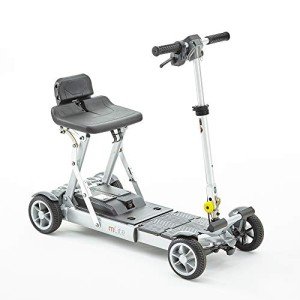Why You Should Concentrate On Making Improvements In Portable Mobility Scooters
Portable Mobility Scooters: Enhancing Freedom and Independence
As the world progressively moves towards inclusivity and availability, portable mobility scooters have actually become a revolutionary option for individuals with mobility challenges. folding mobility scooters with remote key , easy-to-transport scooters are developed to empower users with the ability to browse their environments with confidence and ease. In this post, we will explore the attributes, benefits, and factors to consider when choosing a portable mobility scooter, supported by tables and FAQs to offer a comprehensive summary.
Understanding Portable Mobility Scooters
Portable mobility scooters are lightweight, battery-operated lorries that provide an alternative mode of transportation for those with limited mobility. Assembled using long lasting products, they are particularly engineered to be lightweight and compact to facilitate easy transportation in vehicles or on public transport.
Key Features of Portable Mobility Scooters
Feature
Description
Weight Capacity
Most scooters can support users weighing in between 250 to 500 lbs
Battery Life
Normal series of 10 to 30 miles per charge
Speed
Typically operates in between 4 to 8 mph
Turning Radius
Differs from 32 to 60 inches, making them ideal for indoor use
Foldability
Numerous designs can be quickly folded for transportation
Wheels
Generally geared up with either solid or pneumatic tires
Portable mobility scooters are ideal for both indoor and outside usage, providing stability and ease of movement.
Advantages of Portable Mobility Scooters
Improved Freedom: Users can participate in activities that were previously tough, such as shopping and interacting socially, thus enhancing general quality of life.
Transport Convenience: Many portable scooters can be easily taken apart or folded, enabling users to carry them in cars and trucks, vans, or public transportation.
Economical: Compared to powered wheelchairs, portable scooters are frequently more economical, providing a cost-effective option.
User-Friendly Design: Most designs include instinctive controls, making them easy to run for individuals of any ages.
Range of Options: With numerous brand names and designs on the marketplace, possible users can select scooters that suit their particular needs— varying from off-road usage to compact indoor choices.
Important Considerations When Choosing a Portable Mobility Scooter
- Weight and Portability: Assess the weight of the scooter itself and its parts. Lighter models are generally easier to carry.
- Battery Life and Range: Consider how far you need to travel on a single charge. If you anticipate long journeys, a scooter with an extended battery life is critical.
- Size and Dimensions: Measure where you'll save the scooter and guarantee it fits conveniently in your lorry or home.
- Convenience Features: Look for scooters with adjustable seats, armrests, and other ergonomic features for included convenience during use.
- Terrain Compatibility: If you prepare to use the scooter outdoors, ensure it can deal with various terrains (e.g., gravel, lawn) with ease.
Factor to consider
Significance
Weight & & Portability
Affects ease of transportation and storage.
Battery Life
Figures out variety and flexibility to explore.
Size
Important for storage and maneuverability.
Convenience Features
Improves the overall user experience.
Terrain Compatibility
Guarantees adaptability in outside conditions.
Regularly Asked Questions (FAQs)
1. How quickly can a portable mobility scooter go?
Most portable mobility scooters can reach speeds in between 4 to 8 miles per hour. However, the speed may differ based upon the design and the weight of the user.
2. Do portable mobility scooters require a license or registration?
In most nations, portable mobility scooters do not require a chauffeur's license or registration, but it's important to inspect local guidelines.
3. What is the common price series of portable mobility scooters?
Costs usually range from ₤ 600 to ₤ 3,000 or more, depending on features, brand name, and specs.
4. Can portable mobility scooters be used on public transport?
Yes, many public transport systems accommodate portable mobility scooters, but it's recommended to sign in advance concerning policy information and space limitations.
5. What are the maintenance requirements?
Routine upkeep consists of battery checks, tire inspections, and keeping the scooter clean. It's encouraged to speak with the user manual for specific maintenance guidelines for your design.
Portable mobility scooters have actually become a lifeline for numerous people seeking independence and mobility in their every day lives. Their convenience, ease of usage, and variety of readily available models allow users to pick the best scooter to fit their lifestyle.
For anyone thinking about buying a portable mobility scooter, it's vital to assess personal needs thoroughly and explore different options on the marketplace. With the ideal choice, these scooters can considerably boost mobility and help with a more active lifestyle, ultimately causing improved health and wellbeing.
By comprehending the features and aspects associated with choosing a portable mobility scooter, users can take the initial step towards claiming their flexibility once again. Whether for running errands, delighting in the outdoors, or simply moving the home, portable mobility scooters redefine what it suggests to remain active and participated in life.
